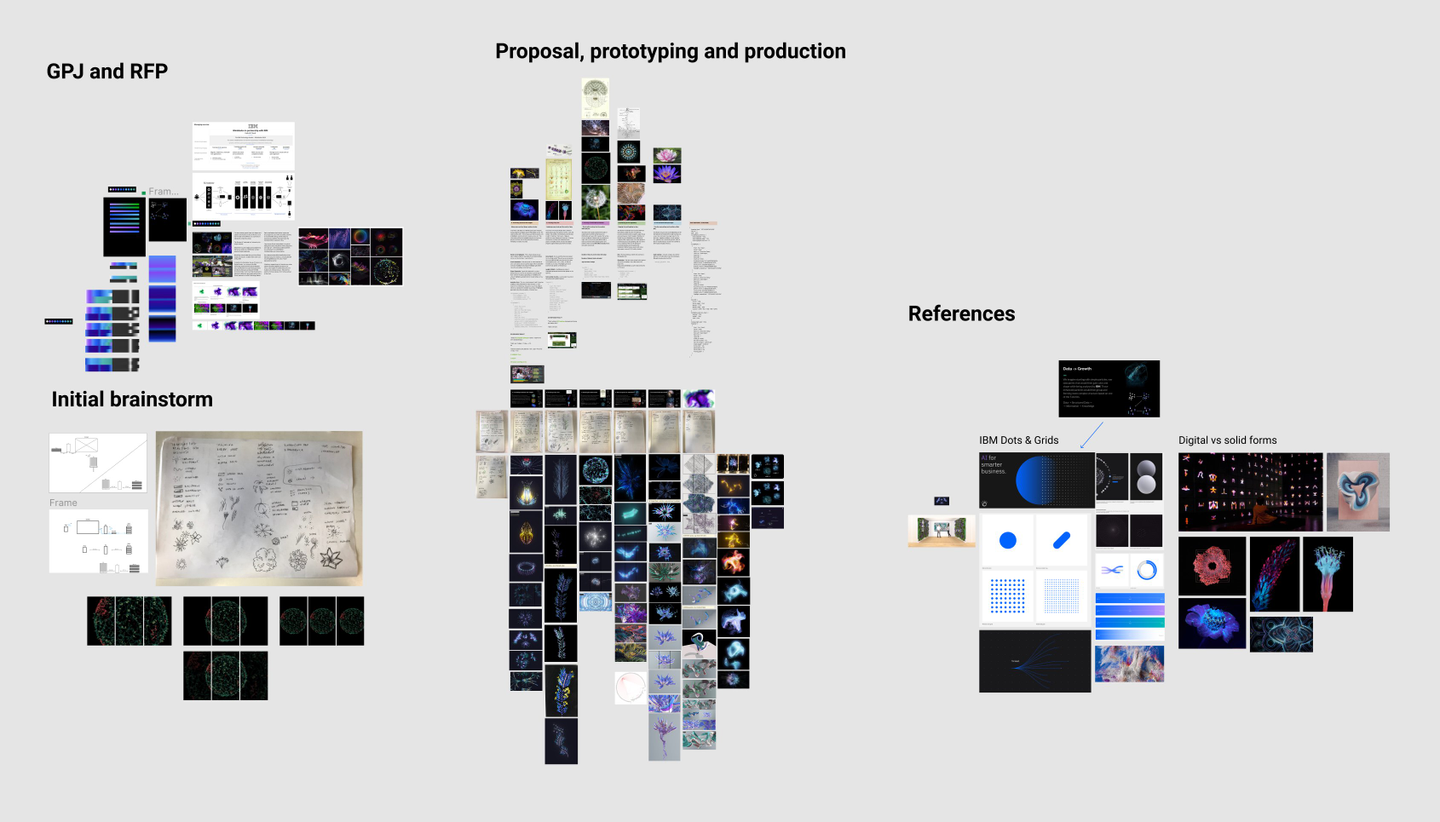- laying out information spatially seems to work well for me for divergent thinking - putting ideas next to each other, recombining them, rich media and text intermixed on the same infinite canvas
-
keeping in mind Thinking by Writing ideas, canvas for thinking should probably be a very personal thing
- all my attempts so far, to share the work in progress canvases have failed - they seem to be too close to my internal concept map for them to be useful to anyone else in the spatial form
- more on spatial software: Fractality of Software Tools, Places in Software
Non of our recent work would happen without Figma. From boards with brief breakdown, desk research, data discussions, concept drawings to WIP screenshots, branding guide and UX user journeys. We bring visual thinking to the way we both design and code.
— Marcin Ignac - https://twitter.com/marcinignac/status/1200022203728838656
I'm really able to do spatial reasoning and looking at big picture only in Figma
— Marcin Ignac - https://twitter.com/marcinignac/status/1100403083635380226
-
it's interesting how Marcin uses Figma not for design, but for visually thinking and collecting information

- these ideas are related to what Muse is doing on the iPad
Oberon's "desktop" is an infinitely large two-dimensional space on which windows (and documents, since the distinction becomes meaningless in some ways) can be arranged
(...)
Instead of stacking windows, hiding them behind each other (which is possible in modern versions of Oberon), you simply arrange them next to each other and zoom out and in again to switch between them. When people held presentations using Oberon, they would arrange all slides next to each other, zoom in on the first one, and then simply slide the view one screen size to the right to go to the next slide.
(...)
In some ways, this also obsoletes the idea of opening a document. Essentially, all documents can be open all the time. All you have to do to interact with one is to zoom in close enough.
- no distinction between applications and documents is another case in point for Data not Apps
- Semilattice, another interesting take on canvas for thinking
I finished my contract with MakeSpace in February, I can't wait for the project to become public so you can play with it — it's so much fun to meet in a space, bring notes and images with you, and see what others are looking at. The project reminds me a lot of the original Engelbartian vision of collaboration — a multiplayer Canvas for Thinking.
- ideas from Canvas for Thinking could be applied to programming
- laying out functions spatially
- laying out (embodied data) spatially
- or maybe a Data Layer that can be toggled on/off
- mixing code, visual reference materials, running instances, and data in the same space (I explored some of these ideas in Protoboard)
- related to Canvas for Thinking, End-User Programming, Future Of Coding
- whole operating system could become a canvas for thinking
- this seems especially interesting in combination with Canvas for Programming and Canvas for Thinking
- related to Canvas for Thinking, Canvas for Programming - (infinite) canvases might be a great building block for Tools for Thinking
Allowing users to doodle on the OS-level turns the whole system into a canvas for thinking.